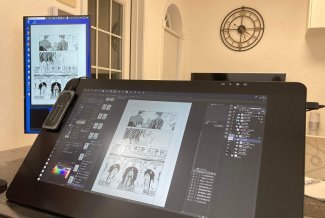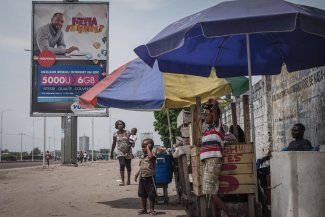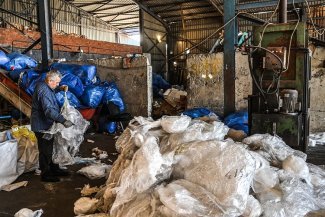When Minu’s limp body was piled onto the mass of corpses after Rana Plaza collapsed, she prayed that someone would notice that she was still alive.
Too weak to call out, she had been smothered under dead bodies in the rubble without food or water for three days. As they laid her out in the makeshift mortuary on the Adhur Chandra High- School playground in Savar, someone heard the faintest of cries and realized she was still alive.
“As I laid on the school oval, I thought I could not even make enough noise for someone to notice me. I had nothing left in me at all – I was just like another one of the bodies in the pile,” she recalls.
Minu Aktar had been working in Phantom Apparels on the fourth floor of Rana Plaza for four and a half years. She still suffers from physical injuries sustained during the collapse, as well as ongoing trauma, from being trapped under the building.
Six months on, however, Minu is starting to overcome her grief with the support of her family and through the ILO’s Technical Vocational Education and Training (TVET) Reform Project in partnership with BRAC, a major non-governmental organisation.
The programme, funded by the European Union, is equipping survivors with the skills they need to get jobs in local workplaces.
As a result, Minu is now working in a tailor’s shop in Savar, mentored by an ILO/BRAC supervisor and master craftsperson.
“I did not think that I would ever be able to work again, because of my fear and because of my injuries, but now I am learning new skills and it feels really good. Tailoring and dress making is interesting and I have a good supervisor. I am also working together with another survivor called Khaleda, so we support each other and learn together,” says Minu.
“Seeing my family, having a job – I finally feel like I am alive again,” she adds.
Mijanur Rahman was a technician in Phantom Apparels on the third floor of Rana Plaza and had his right leg crushed in the collapse. He wanted to return to work in a factory but has been unable to because he cannot stand for long periods of time or walk for long distances.
Trapped between steel rods in the collapsed building, Mijanur thought he would never be able to get out of the building, let alone step into a workplace again. Now he is looking forward to new skills, a new job and a new career path.
“I wanted to return but it was impossible and I also cannot do other types of jobs so I am happy that I now have a way to make money. I am learning a lot from the shop owner here. If there is any problem in a mobile phone set, we can repair it,” he says.
The skills training programme is based on an existing apprenticeship model, which was adapted to include Rana Plaza survivors, explains Srinivas Reddy, ILO Bangladesh Country Director:
“The TVET Reform Project has developed a number of models focusing on better delivery of skills. This particular model focuses on high employment trades, particularly those found in regional and rural areas, such as tailoring, motorcycle servicing and mobile phone repairing. The model fits well with the needs of the survivors because, in just a short time, it gives people quality skills which they can then use to enter a sector in which almost all are guaranteed employment.”
Walk into Fashion Tailors in Savar now and you will be greeted by two smiling tailors – Minu and Khaleda – working alongside their supervisor and master craftsperson, Shekh Sadi. Not only is the skills’ training programme giving survivors the opportunity to learn new skills, but it is also helping them to cope with the tragedy.
In a corner of the shop are hanging three brightly coloured red and orange dresses with matching scarves, still waiting to be picked up. But Shekh Sadi knows that the girls he made the dresses for will never wear them. They died under the rubble of Rana Plaza.
Distressed by the loss of so many lives, he didn’t know how to help at first. Now, by training Minu and Khaleda, he is equipping them with the skills to make dresses like these – giving them a pathway into new jobs.
This story was originally published on the ILO website.








